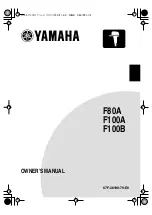
Introduction
Page 1-2
Mainboard Form-Factor
The board is designed with ATX form factor - the new industry standard of chassis.
ATX form factor is essentially a Baby-AT baseboard rotated 90 degrees within the
chassis enclosure and a new mounting configuration for the power supply. With
these changes the processor is relocated away from the expansion slots, allowing
them all to hold full length add-in cards. ATX defines a double height aperture to
the rear of the chassis which can be used to host a wide range of onboard I/O.
Only the size and position of this aperture is defined, allowing PC manufacturers
to add new I/O features (e.g.; TV input, TV output, joystick, modem, LAN, etc.) to
systems. This will help systems integrators differentiate their products in the
marketplace, and better meet your needs.
Smaller size promotes a smaller system size.
I/O shield does not need to be retooled in an ATX 2.01 or later. The
mainboard should be used in an ATX 2.01 (or later) compliant case.
A smaller power supply can be used. High integration on mainboard
reduces the system costs.
PCI slots
Expandable I/O
5 1/4"
Bay
3 1/2"
Bay
Figure 2: Summary of ATX chassis features
CPU
Single chassis
fan for system
ATX
Power
Supply
ATX power connec-
tor
Floppy / IDE
connectors
ISA slot
Summary of Contents for mu-3vsa
Page 2: ......
Page 47: ...Drivers Installation Page 5 2 Page Left Blank ...






































